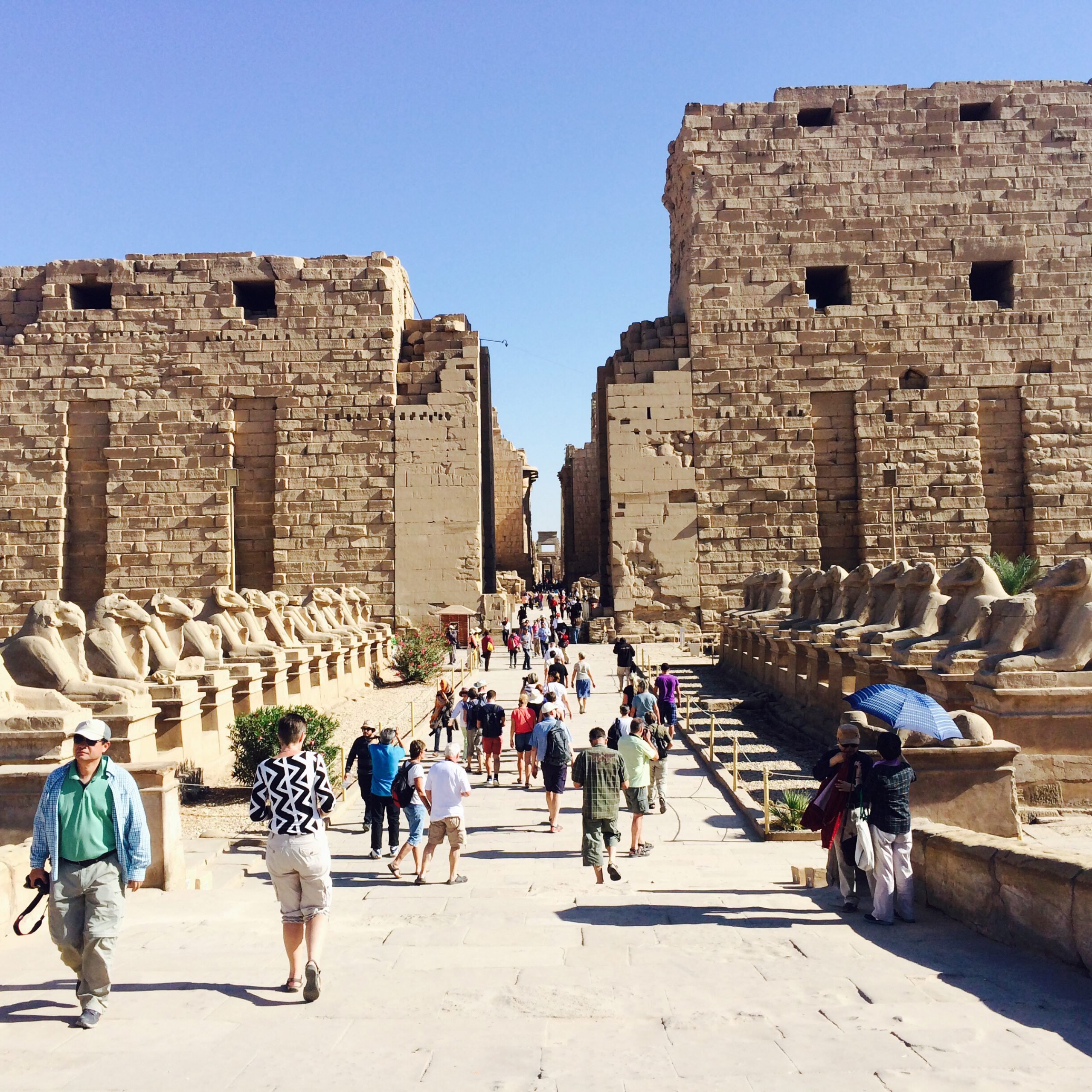Egypt’s renowned Karnak Temple in Luxor received, on Tuesday, its first tourist groups who travelled from Hurghada, on the first day of the resumption of the country’s cultural tourism movement.
International tourism across Egypt was suspended in March, as part of the government implemented precautionary measures against the novel coronavirus (COVID-19).
Mostafa Waziri, Secretary General of the Supreme Council of Antiquities, said that the groups included tourists from Ukraine and France who arrived in Hurghada on Monday.
The trips to Luxor come as part of holidays booked to Egypt’s tourism hubs along the Red Sea, where tourists will also spend time visiting the country’s monuments, and learn about the Ancient Egyptian civilization.
Waziri stressed that all museums and archaeological sites nationwide are committed to implementing the required health and safety measures issued by the Ministry of Tourism and Antiquities.
These measures, which include operating at a maximum 50% capacity, have been put in place at museums and archaeological sites, so that they can reopen alongside the resumption of Egypt’s cultural tourism.
Sites and museums are also required to provide hand sanitizers and sterilization equipment, alongside conducting continuous sanitation and good ventilation before and after each trip on all tourism vehicles. All museums and visitor centers at archaeological sites are also required to undertake daily disinfection of common surfaces and floors before opening to visitors.
Tourist groups should not exceed 25 individuals while visiting museums and archaeological sites, and a tour guide should wear a face mask whilst conducting tours. This is in addition to the commitment to using headphones inside museums, and sterilizing the headphones after each use.
Tourism companies should provide masks for tourists and drivers, in addition to measuring the daily temperature of workers and visitors before visiting museums and closed places. Social distancing is also strictly required at all times.
The Ministry of Tourism and Antiquities has also put a limit on the number of visitors present at any one time within museums and archaeological sites. This means that a maximum of 100 visitors per hour are allowed inside museums, excluding the Egyptian Museum in Tahrir Square, which is allowed a maximum of 200 visitors. A maximum of 10 to 15 visitors are allowed in any one-hour period at any ancient cemetery or inside pyramids.


Comment (0)